Maryland Trees Collection
One of the goals of the Glen Arboretum is to exhibit each of the native trees of Maryland. There are approximately 120 species of trees naturally occurring in Maryland. As of fall 2021 there are over 100 of these species species — ranging from large, fully established trees to newly planted saplings — growing in the Glen Arboretum. Please see the Trees of the Glen Arboretum (PDF) for more about the exact types of trees that are currently living in the Glen Arboretum.
Another goal is to establish many of the native Maryland shrubs. There are currently more than 30 species of native shrubs in the Glen.
Why Native Trees and Shrubs Are Important
Here are some of the reasons native Maryland trees are important to our environment.
- Native trees attract native insects, which in turn attracts native birds who feed on these insects creating a thriving and sustainable ecosystem.
- Bird populations help control undesirable insects.
- Trees reduce energy costs through shading in summer and blockage of winds in winter. Trees and shrubs add aesthetic beauty to our Maryland habitats and provide food and cover for numerous animals.
- Trees absorb carbon dioxide, a greenhouse gas, and immobilize the carbon for long periods.
Top 20 Trees of Maryland You’re Likely to See
Within the Glen Arboretum you will find, among many others, the following 20 trees. These 20 trees make up about 80 percent of the trees that you are likely to encounter in the forests of central Maryland. They are listed below by their scientific name, common name and organized by category. Each of the links below takes you to a page discussing the description of the tree, its distribution, its wildlife and economic importance, important threats, and interesting facts.
Cone Bearing Trees
Description — evergreen trees with needle leaves.
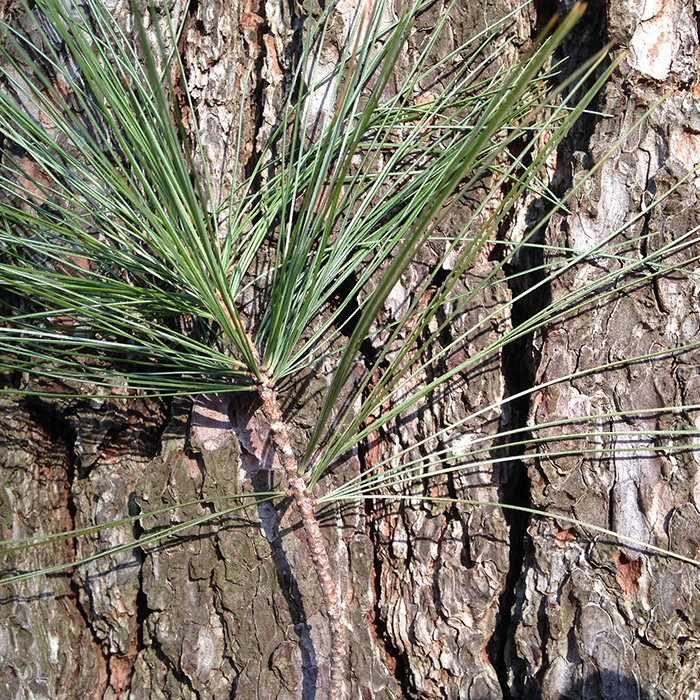
1. Eastern White Pine
Eastern white pine (Pinus strobus) is tall with needles in clusters of five and cones without sharp points.
Eastern White Pine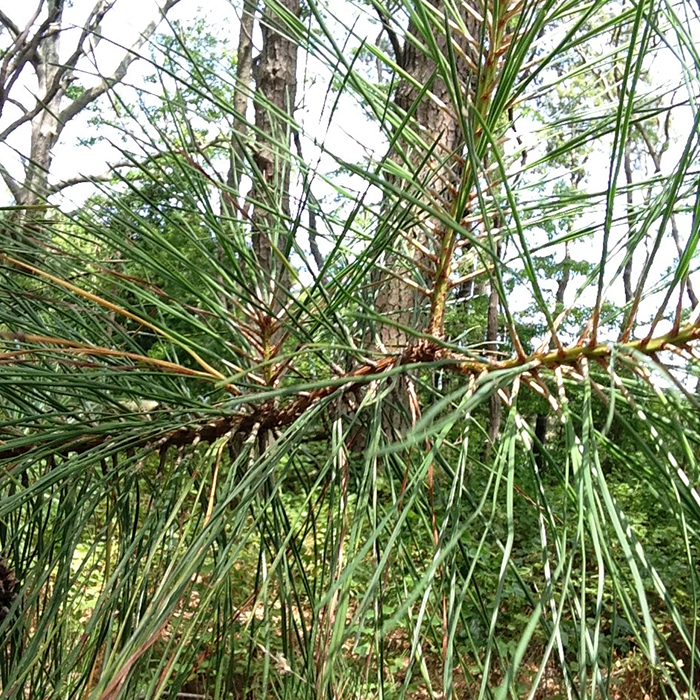
2. Loblolly Pine
Loblolly pine (Pinus taeda) has needles in clusters of three and cones with sharp, out-curved prickles.
Loblolly Pine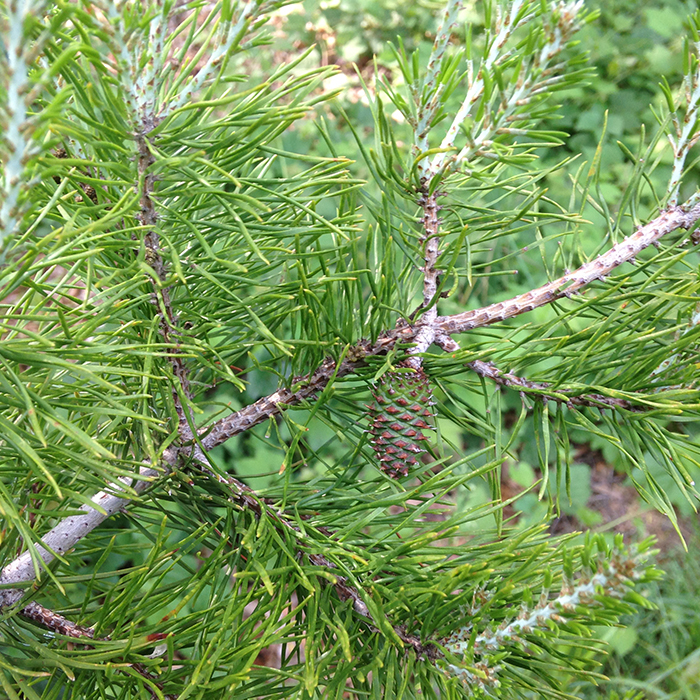
3. Virginia Pine
Virginia pine (Pinus virginiana) has needles in clusters of two and small cones.
Virginia Pine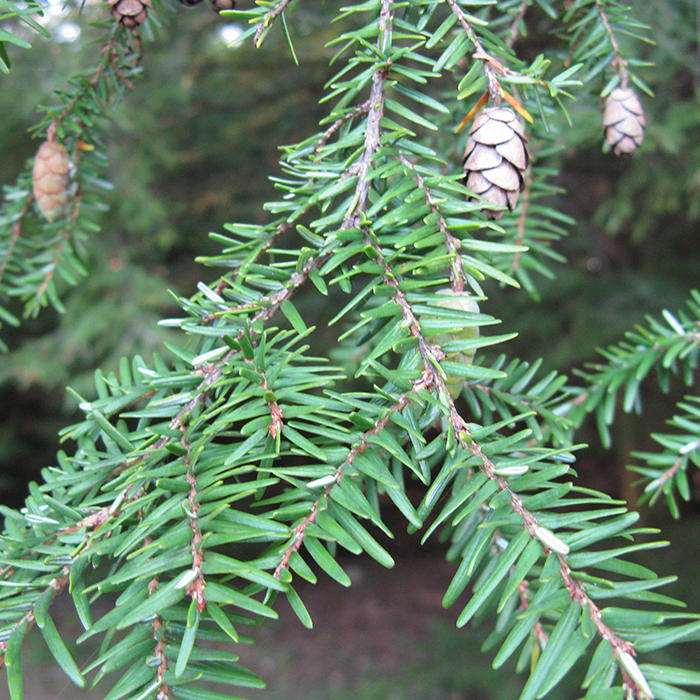
4. Eastern Hemlock
Eastern hemlock (Tsuga canadensis), found mostly in Western Maryland, has one flat needle with white lines on the underside.
Eastern HemlockOaks
Description — trees with acorns for fruit, alternate leaves with leaf edges forming distinct lobes.
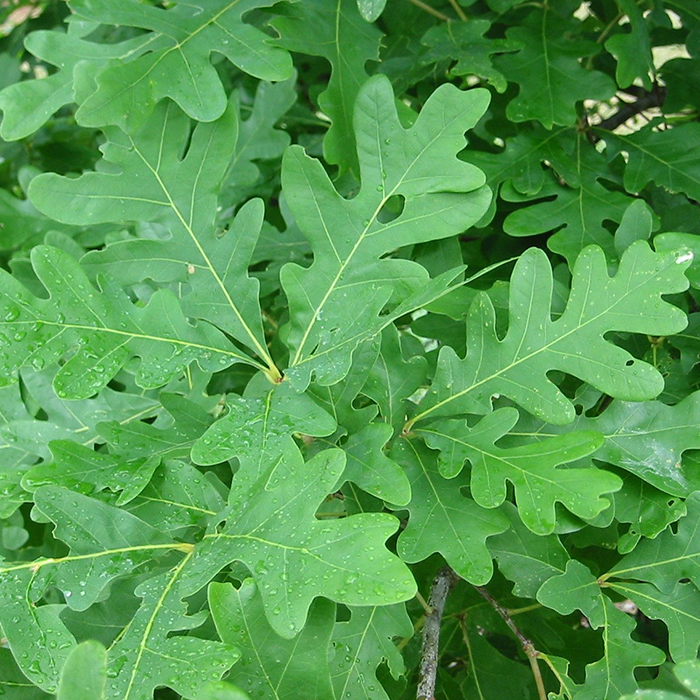
5. White Oak
White oak (Quercus alba) has whitish gray bark and leaves with rounded lobes with no bristles on the edges.
White Oak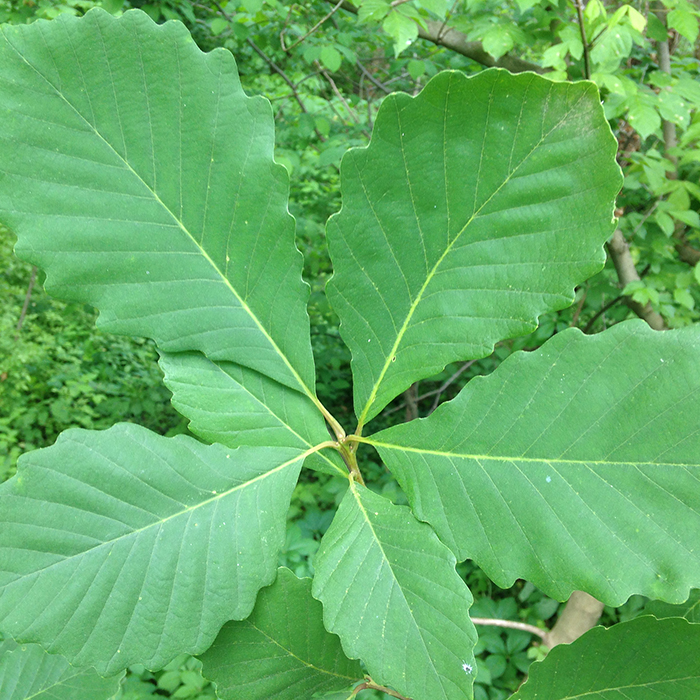
6. Chestnut Oak
Chestnut oak (Quercus “montana”) has dark, deeply furrowed bark and leaves with bristleless edges that have 10 to 16 pairs of broad, rounded teeth.
Chestnut Oak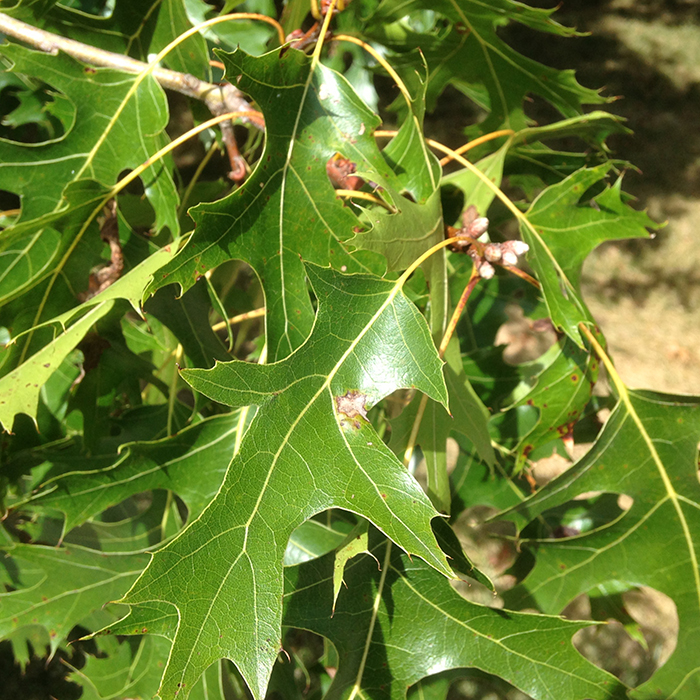
7. Black Oak
Black oak (Quercus velutina) has leaves with shiny topsides and yellowish undersides and acorns with a cap that has fringe along the seed.
Black Oak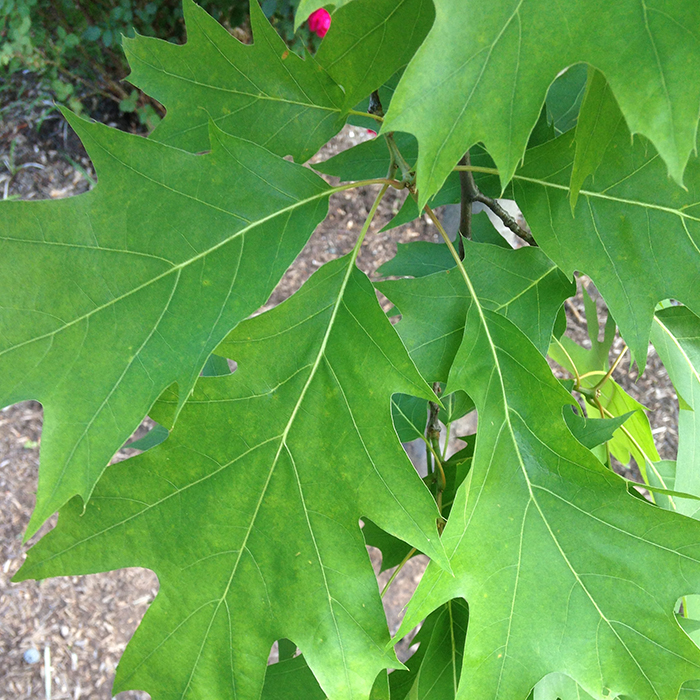
8. Northern Red Oak
Northern red oak (Quercus rubra) is found most frequently in Western Maryland, and has leaves with several shallow or deep, bristle-tipped lobes and an acorn that has a cap covering only the top quarter.
Northern Red Oak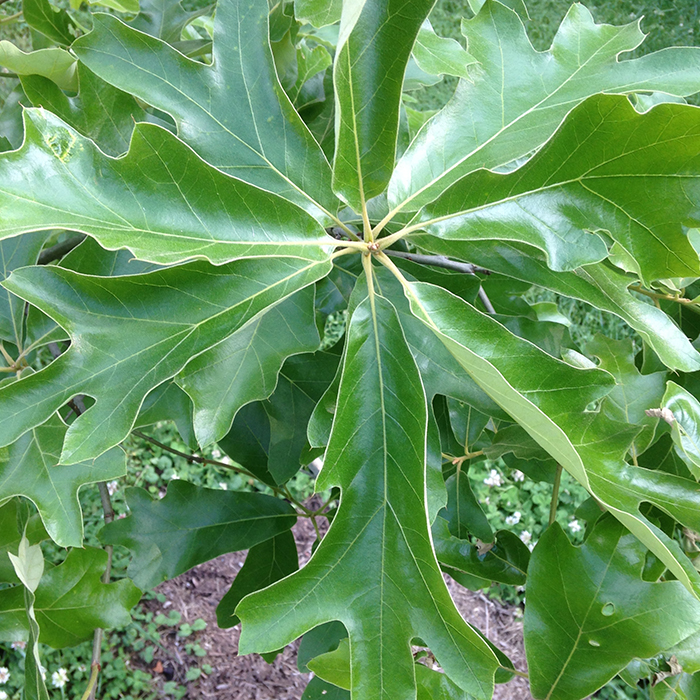
9. Southern Red Oak
Southern red oak (Quercus falcata var. falcata) has leaves with three bristle-tipped lobes and a middle vein that is often S-shaped from leaf base to tip. It is most commonly found on the coastal plains of the Chesapeake Bay.
Southern Red OakTrees with Opposite Leaves
Description — trees with two leaves attached at the same point and “helicopter” fruits.
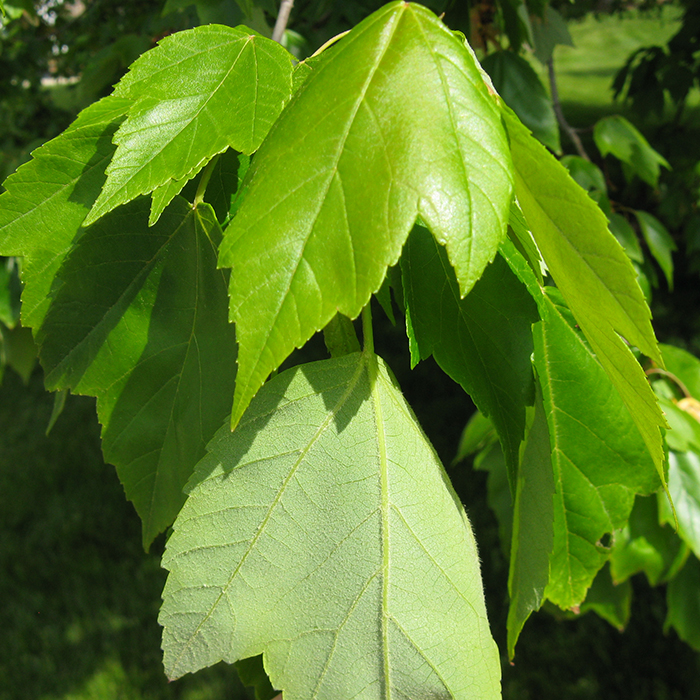
10. Red Maple
Red maple (Acer rubrum) — A favorite yard tree due to its bright red fall color, red maples have leaves that are typically green above and lighter colored or white beneath.
Red Maple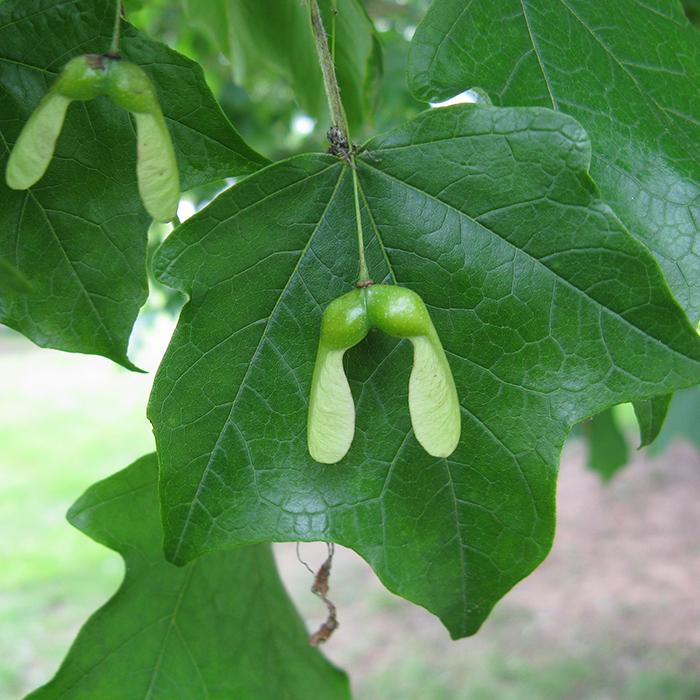
11. Sugar Maple
Sugar maple (Acer saccharum) — Found in Western Maryland and often tapped as a source for maple syrup, sugar maples have leaves that are green on both upper and lower surfaces.
Sugar Maple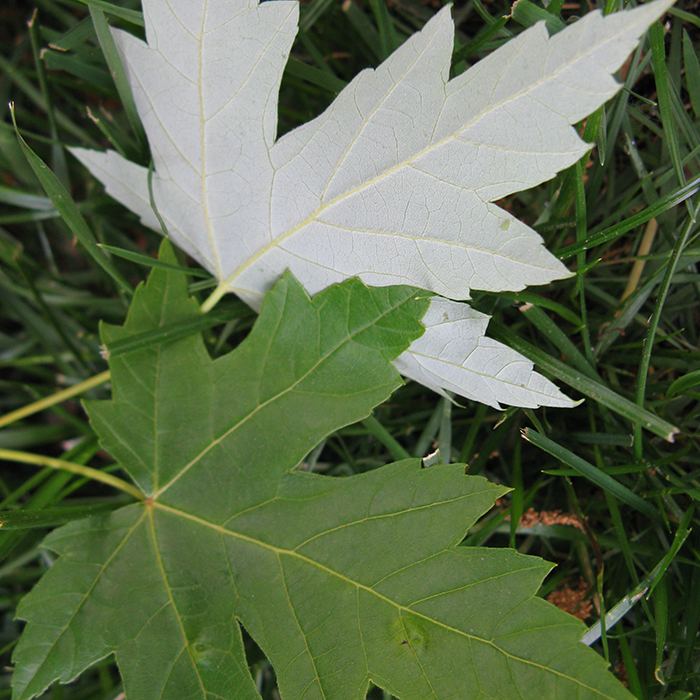
12. Silver Maple
Silver maple (Acer saccharinum) — A widespread tree of flood plains, silver maples have bi-colored leaves with a green upper surface and a nearly white lower surface.
Silver Maple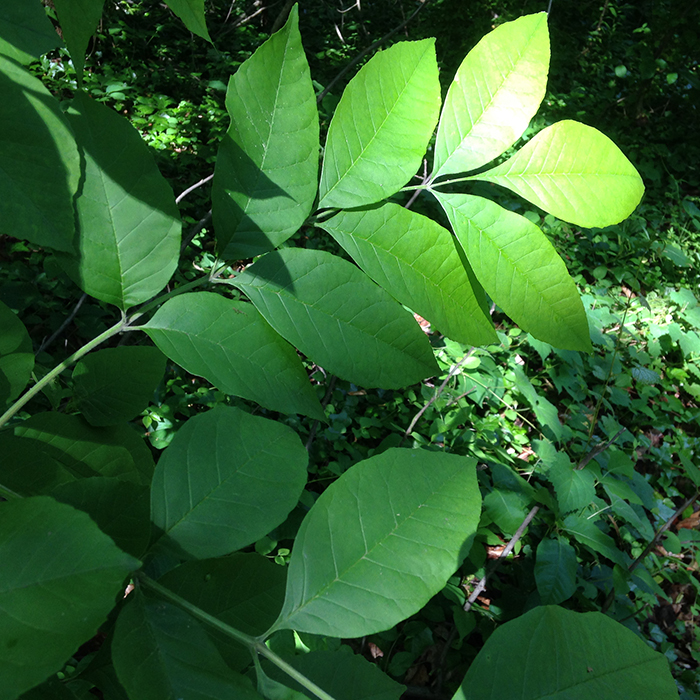
13. White Ash
White ash (Fraxinus americana) has a feather-like leaf that is divided into five to seven leaflets.
White AshTrees with Circular, Alternate Leaves
Description — trees with leaves that are as wide as long, circular in outline, alternate on the stem and have lobes and points.
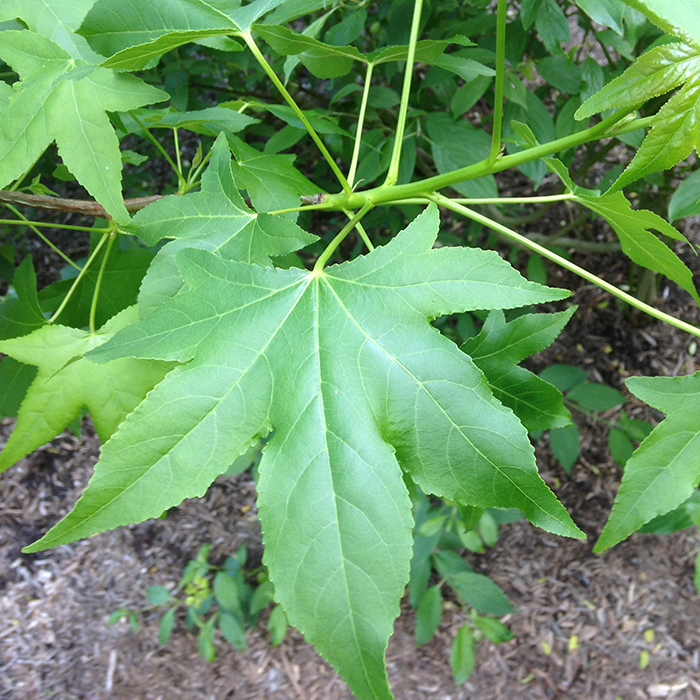
14. Sweetgum
Sweetgum (Liquidambar styraciflua) — A popular yard tree for its purple and red fall color, Sweetgums have saw-toothed leaves with five lobes and a fruit that is a small, smooth ball.
Sweetgum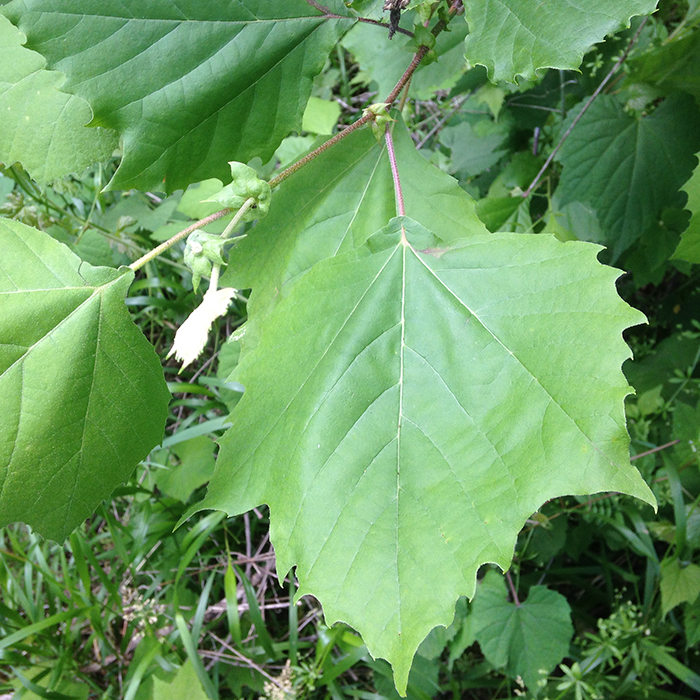
15. American Sycamore
American sycamore (Platanus occidentalis) has large leaves with five lobes that are hairy on the underside.
American Sycamore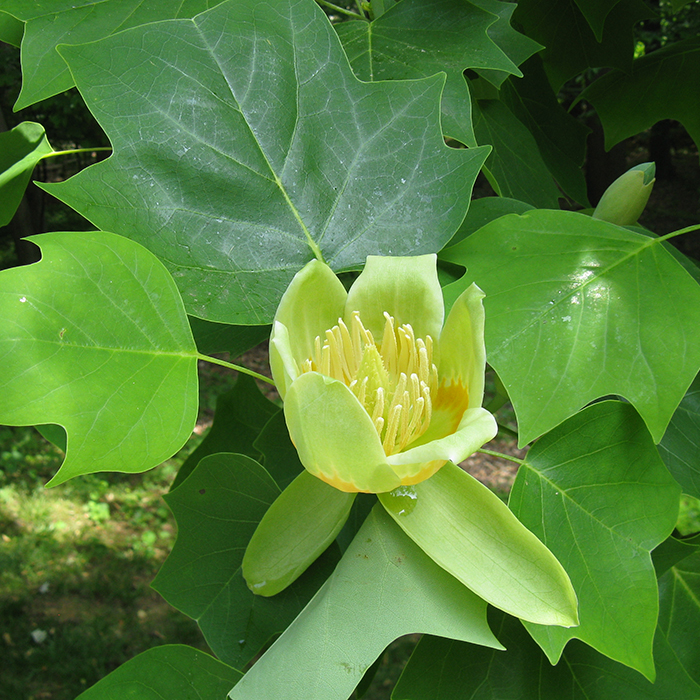
16. Tuliptree
Tuliptree (Liriodendron tulipifera) has yellow and green flowers (sometimes with orange spots) and flat-topped leaves with four lobes. Alternative names include tulip poplar and yellow poplar.
TuliptreeMiscellaneous Trees
Description — trees with alternate leaves in various shapes.
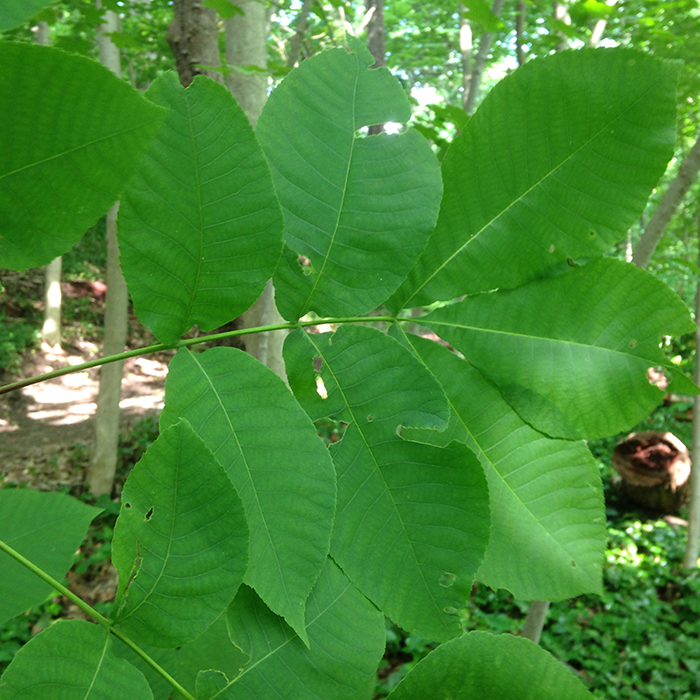
17. Pignut Hickory
Pignut hickory (Carya glabra) has large leaves that are subdivided into five to seven leaflets and bear a round nut for fruit.
Pignut Hickory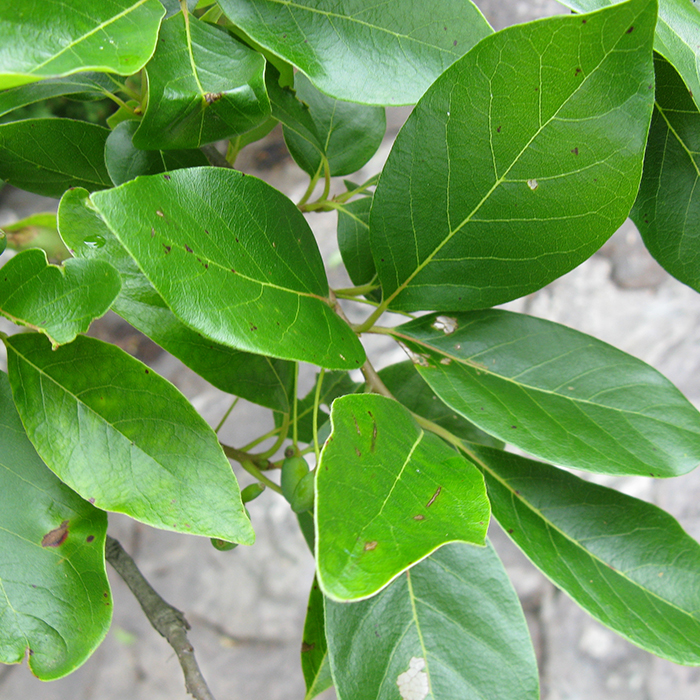
18. Blackgum
Blackgum (Nyssa sylvatica var sylvatica) has black or dark purple fruit and have leaves with smooth edges and a long tapering tip.
Blackgum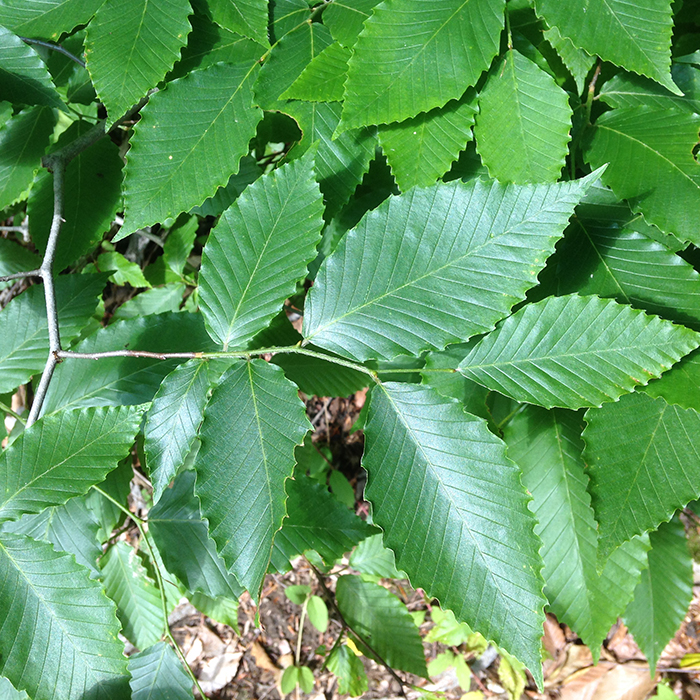
19. American Beech
American beech (Fagus grandifolia) has distinct smooth, light grey colored bark with leaves that have straight veins ending in a small point.
American Beech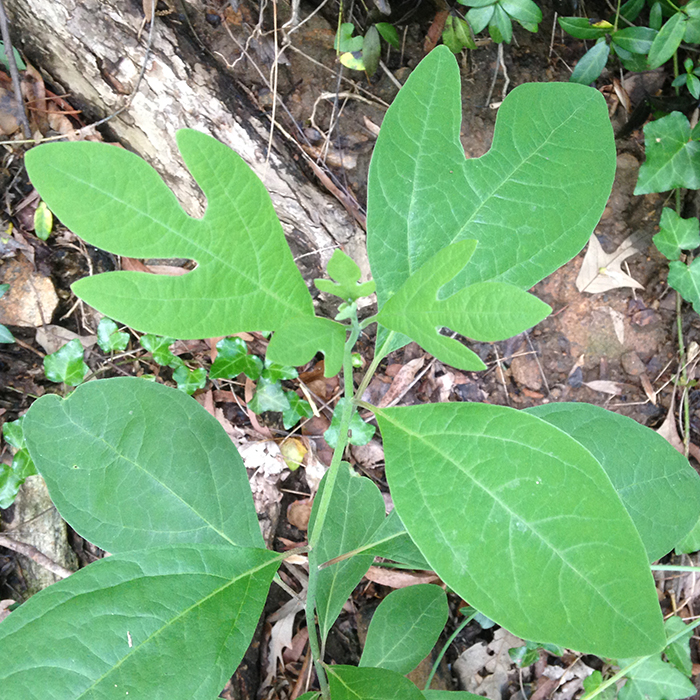
20. Sassafras
Sassafras (Sassafras albidum) has leaves that have a spicy fragrance when torn and are either oval, mitten shaped or three-lobed.
Sassafras